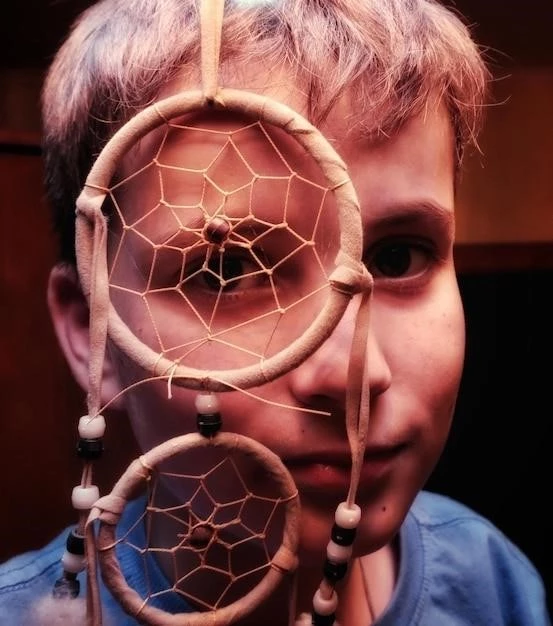Disease ー Facial Clefting Corpus Callosum Agenesis
Overview of the Medical Condition
Facial clefting corpus callosum agenesis is a rare congenital anomaly that involves two distinct conditions⁚ facial clefting and corpus callosum agenesis. Facial clefting refers to a group of conditions where there are splits or openings in the tissues of the face. This can affect the lip, palate, or both. Corpus callosum agenesis, on the other hand, is a neurological condition where the corpus callosum, the band of nerve fibers connecting the two hemispheres of the brain, fails to develop normally or completely.
Individuals with this combined condition may experience a range of symptoms that can vary in severity. The exact cause of facial clefting corpus callosum agenesis is often complex and can involve genetic factors. While each condition can occur independently, the combination of both presents unique challenges in terms of diagnosis and treatment.
Understanding the complexities of these conditions is crucial for healthcare professionals to provide appropriate care and support to individuals affected by facial clefting corpus callosum agenesis. Through comprehensive assessment and a multidisciplinary approach, the medical community aims to improve outcomes and quality of life for those living with this rare condition.
Understanding the Genetic Component
Genetic factors play a significant role in the development of facial clefting corpus callosum agenesis. Research suggests that both conditions have a genetic basis, although the specific genes involved and the inheritance patterns can be complex and variable. Various genes have been implicated in facial clefting, influencing the formation of facial structures during embryonic development.
Corpus callosum agenesis is also associated with genetic abnormalities, with mutations in certain genes linked to the development of the corpus callosum. The interplay between these genetic factors can contribute to the manifestation of both conditions in individuals with facial clefting corpus callosum agenesis.
It is crucial for geneticists and clinicians to explore the genetic underpinnings of this condition to better understand its etiology and provide more personalized care. Genetic testing and counseling can be valuable tools in identifying specific genetic mutations and assessing the risk of recurrence in families affected by this rare combination of disorders.
Diagnosis of the Conditions
Diagnosing facial clefting corpus callosum agenesis often involves a comprehensive evaluation that includes clinical assessments, imaging studies, and genetic testing. For facial clefting, the diagnosis is usually made based on a physical examination of the affected facial structures. This may include a cleft lip, cleft palate, or both, which can be identified soon after birth.
When it comes to corpus callosum agenesis, imaging techniques such as magnetic resonance imaging (MRI) play a crucial role in visualizing the absence or malformation of the corpus callosum. These diagnostic tools help healthcare providers confirm the presence of both conditions and assess the extent of neurological abnormalities.
Genetic testing may also be recommended to identify specific genetic factors contributing to facial clefting corpus callosum agenesis. This can help determine the underlying genetic abnormalities and guide treatment decisions. A multidisciplinary approach involving specialists from various fields is essential to ensuring an accurate diagnosis and developing a tailored treatment plan for individuals with this rare combination of disorders.
Symptoms and Abnormalities
Facial clefting corpus callosum agenesis can present with a range of symptoms and abnormalities that affect both the physical appearance and neurological development of individuals. In terms of facial clefting, common symptoms include a split or opening in the lip, palate, or both, leading to difficulties with feeding, speech, and dental health.
Corpus callosum agenesis contributes to neurological abnormalities, such as developmental delays, cognitive impairments, and challenges with motor coordination. Individuals may also experience seizures, behavioral issues, and difficulties with social interactions due to the impact of this condition on brain function.
When both conditions occur together, the combination can exacerbate symptoms and lead to additional challenges in both communication and physical development. The presence of facial clefting alongside corpus callosum agenesis requires a multidisciplinary approach to address the complex needs of individuals affected by this rare disorder.
Impact on Neurological Development
Facial clefting corpus callosum agenesis can have a significant impact on neurological development due to the presence of corpus callosum agenesis, which affects the communication between the brain’s hemispheres. The corpus callosum plays a crucial role in integrating information and coordinating functions between the left and right sides of the brain;
Individuals with this condition may experience delays in motor skills, speech and language development, and cognitive abilities. The absence or malformation of the corpus callosum can lead to challenges in processing information, reasoning, and problem-solving. Seizures and other neurological symptoms may also be observed in some cases.
Moreover, the neurological impact of facial clefting corpus callosum agenesis can influence social interactions and emotional development. Individuals may face difficulties in understanding social cues, regulating emotions, and forming relationships due to the brain’s altered structure and communication pathways.
Early intervention and ongoing neurological support are essential to help individuals with this condition reach their developmental milestones and maximize their quality of life. A comprehensive approach that addresses both the physical and neurological aspects of facial clefting corpus callosum agenesis is crucial for promoting optimal neurological development and overall well-being.
Treatment Options Available

The treatment of facial clefting corpus callosum agenesis often involves a multidisciplinary approach to address the complex needs of individuals with this rare condition. For facial clefting, surgical procedures may be required to repair the cleft lip and palate, improve facial aesthetics, and restore normal function for feeding and speech.
Management of corpus callosum agenesis focuses on supportive therapies to address neurological symptoms and developmental delays. This may include early intervention services, speech therapy, occupational therapy, and educational support to promote cognitive and motor skills development.
Individualized treatment plans are essential to address the unique combination of symptoms present in facial clefting corpus callosum agenesis. Neurologists, craniofacial specialists, geneticists, speech therapists, and other healthcare professionals collaborate to provide comprehensive care that addresses the physical, neurological, and social aspects of the condition.
While treatment cannot cure facial clefting corpus callosum agenesis, early intervention and ongoing support can significantly improve outcomes and quality of life for affected individuals. The goal of treatment is to maximize functional independence, enhance communication abilities, and promote overall well-being for those living with this complex congenital anomaly.
Communication and Social Challenges
Facial clefting corpus callosum agenesis can present significant communication and social challenges for individuals affected by this rare condition. Communication difficulties may arise from both the physical impact of facial clefting on speech and language development, as well as the neurological implications of corpus callosum agenesis on cognitive and social communication skills.
Individuals with facial clefting may experience challenges with articulation, resonance, and language development, requiring speech therapy and interventions to improve communication abilities. The presence of corpus callosum agenesis can further complicate communication by affecting language processing, social pragmatics, and verbal reasoning.
Social interactions may also be impacted by the complex nature of facial clefting corpus callosum agenesis. Individuals may struggle with understanding social cues, forming relationships, and regulating emotions due to the neurological abnormalities associated with the condition.
Addressing communication and social challenges requires a multidisciplinary approach that includes speech therapists, psychologists, special educators, and other professionals. Strategies such as social skills training, augmentative and alternative communication (AAC) techniques, and individualized educational plans can help individuals with this condition navigate social interactions and enhance their quality of life.
